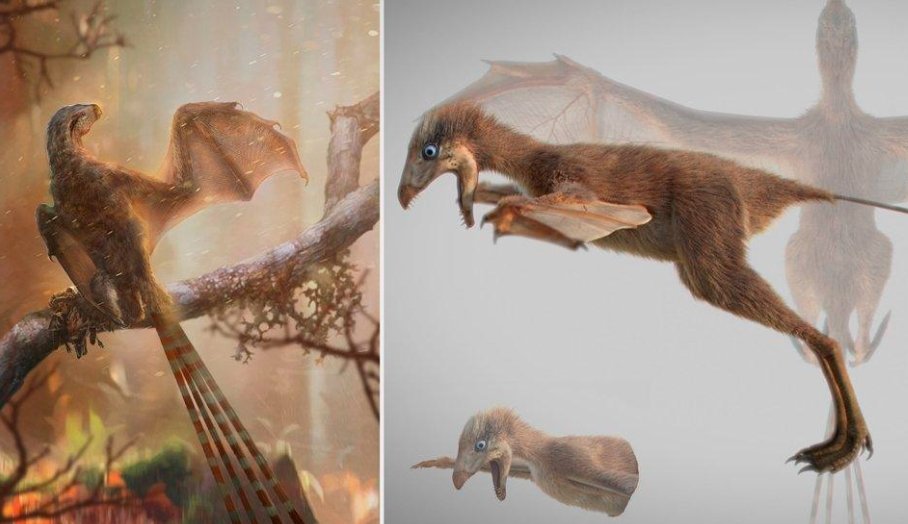A remarkable new discovery has shed light on the evolution of flight in dinosaurs, revealing the existence of a bat-like winged dinosaur that soared through the skies of Earth around 163 million years ago. This finding not only provides new insights into prehistoric flight but also challenges previous assumptions about the evolutionary paths taken by airborne dinosaurs.
A Bat-Like Evolution of Flight
The newly identified dinosaur, Ambopteryx longibrachium, was uncovered in the Liaoning Province of China. Researchers were initially puzzled by the fossil, which had been preserved in nearly perfect condition. Min Wang, a vertebrate paleontologist at the Chinese Academy of Sciences, initially mistook the fossil for that of a bird. However, further examination revealed distinctive dinosaur traits, confirming that it was, indeed, a prehistoric flying dinosaur.
Ambopteryx’s most striking feature is its membranous wings, which were supported by elongated forelimbs. These flaps of skin are similar to those found in modern bats and pterosaurs, suggesting that this species was part of an entirely different evolutionary track for flight than what we see in modern birds. While birds evolved feathers for flight, the Ambopteryx’s wings were more akin to the bat wings—a membrane structure that is not commonly associated with dinosaurs.

A Glimpse Into Prehistoric Life
Ambopteryx’s body provided more than just clues about its ability to fly. Inside its fossilized remains, researchers found gizzard stones—small pebbles that would have helped it digest food—and fragments of bones, further revealing aspects of its diet and lifestyle. The teeth of the dinosaur suggested that it was omnivorous, feeding on a variety of foods depending on availability.
A Surprising Discovery
This discovery comes as a follow-up to a similar, but initially controversial, finding from 2015. In that year, scientists unearthed a dinosaur known as Yi qi, which also displayed bat-like wings. However, the idea of a dinosaur with such a wing structure was so unexpected that it was met with skepticism by the paleontological community. Stephen Brusatte, a vertebrate paleontologist at the University of Edinburgh, expressed that the idea was so bizarre that it would have been hard for paleontologists to conceive such a creature. Nevertheless, with the discovery of Ambopteryx, the existence of these bat-winged dinosaurs seems to have been confirmed, revealing that at least two different species evolved similar flying adaptations.
Brusatte noted that the discovery of Ambopteryx “pretty much seals the deal” on the existence of a group of dinosaurs with bat-like wings. This finding suggests that flight in dinosaurs may not have been a singular evolutionary path, but rather involved different experiments with wing structures across various species.
How Did Ambopteryx Fly?
Scientists are still working to understand exactly how Ambopteryx navigated the skies. Paleontologist Jingmai O’Connor, co-author of the study, suggested that its flying method may have been a hybrid between gliding and active flight—similar to the movements of a flying squirrel or a bat. It is likely that this dinosaur glided from tree to tree in search of food, using its membranous wings to maneuver through its environment. However, much more research is needed to fully understand its flight capabilities.
The Significance of the Discovery
This discovery adds a new layer to the ongoing debate over the origins of flight in dinosaurs. The two species—Yi qi and Ambopteryx—represent an early experiment in flight, with no other similar species being found from the later Cretaceous period. Wang and his colleagues have described these findings as an “experiment” in the origins of flight, illustrating the diversity of evolutionary paths taken by dinosaurs.
As scientists continue to explore these bat-winged dinosaurs, they may uncover more about the early days of flight, a pivotal chapter in the history of life on Earth.













